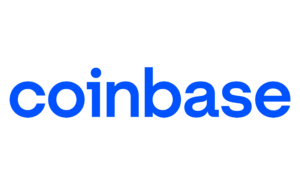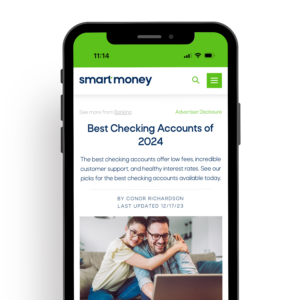Takeaways
- Hot wallets are devices connected to the internet that store your cryptocurrencies.
- Hot wallets have two kinds of keys, public and private, that validate secure transactions.
- Hot wallets can store crypto on phones, desktops, or cryptocurrency exchanges.
- Hot wallets are more vulnerable to hackers because they are linked to the Internet.
- Crypto experts recommend only storing part of your crypto holdings in hot wallets.
Some of the links in this article are from advertising partners of Smart Money, which does not influence our evaluations or recommendations. We work to provide you with accurate and reliable information. Our opinions are our own.
Bitcoin and other cryptocurrencies have become a massive asset class. In early 2024, Bitcoin alone had a market capitalization of over $1.42 trillion, which made it more valuable than some precious metals, like silver [1][2]. As this asset class explodes, investors need to understand how cryptocurrencies work, the top cryptocurrencies in the market, the best cryptocurrency exchanges, and how and where to store their coins.
What is a Hot Wallet?
A hot wallet is a type of cryptocurrency wallet connected to the Internet that allows for the storage, sending, receiving, and spending of digital currencies. They are called “hot” because they are actively connected to the web and are generally free to use. Hot wallets usually have other services like trading, transferring, and transaction capabilities.
Being connected to the Internet makes them more convenient for frequent transactions. However, this regular Internet connection presents a higher risk of theft because they are more accessible to hackers than other alternatives to store your cryptocurrencies, like cold wallets.
Access to a hot wallet can be obtained through trading platforms, mobile apps, and desktop applications. Hot wallets are essential tools for handling daily transactions, and you can use them to pay for food, coffee, clothes, or services at point-of-sale systems that process cryptocurrencies. Another major advantage of hot wallets is that they are particularly useful if you want to trade cryptocurrencies frequently.
One important distinction about hot wallets is that because they are “hot,” they have a live connection to the Internet. There are risks to cryptocurrency wallets specifically because of this Internet connectivity, and hackers can attempt to target memory storage, operating systems, software, networks, and other potential vulnerabilities [3]. The good news is that hot wallet companies know these threats exist and have countermeasures like encryption, multifactor authentication, and other features to ward off cyberattacks.
How a Hot Wallet Works
Hot wallets are immensely popular among newer crypto users because they are easy to use and remind investors of their online stock brokerage accounts. These wallets are constantly connected to the Internet, allowing for immediate transactions – buying, selling, or transferring – whenever you want. The main reason you need a hot wallet is to safely store your crypto, and that involves safekeeping your keys.
Smart Tip:
Private keys are essential to access your coins. Keeping them secure is a must when it comes to owning Bitcoin and other cryptocurrencies. As the crypto saying goes, “Not your keys, not your crypto.”
Cryptocurrency wallets hold both public and private keys. As you might imagine, the public key is accessible to the public and functions much like a bank account number. It lets people, exchanges, and miners send coins to your account. Your private key functions differently. Private keys give you exclusive access to the coins in your account. Think of private keys as the password to your bank account or the PIN on your debit card. Without that password or PIN, you cannot access your funds.
With that in mind, let’s explore how a hot wallet functions. Here is how they generally work:
- Storage of Private Keys: As with any cryptocurrency wallet, the primary function is to store your private keys so that only you can prove ownership of your coins. Private keys are typically a series of letters and numbers in a 256-bit string. With your hot wallet, you can access this online code whenever you need it.
- Transaction Initiation: When you want to send or receive cryptocurrency, you initiate a transaction from your hot wallet. With most hot wallets, everything happens behind the scenes to make a transaction as seamless as possible. For example, you could log into your Coinbase account to purchase more Bitcoin, gain a new private key for a newly purchased coin, or sell a coin.
- Signing Transactions: Your hot wallet uses the stored private keys to sign cryptocurrency transactions. The crypto exchange uses a combination of your public and private keys to verify ownership and transfer coins. This verifies that you are the owner of the funds being sent and allows the transaction to be completed.
- Interacting with Blockchain: The completed and authenticated transaction is then broadcast into the cryptocurrency network or blockchain, where it is verified by miners and added to the blockchain. Blockchain technology allows a peer-to-peer networks of computers or nodes to keep a public record of cryptocurrency ownership. This decentralization and public record is what has attracted crypto evangelists.
- Receiving Transactions: Your hot wallet can also receive funds. The second key in your wallet provides a public address, like a bank account number, which you would share with a person or service wanting to transfer funds to you. Once your hot wallet receives the funds, like in a bank transfer, a new private key is created.

Coinbase Website
Coinbase
Smart Money Rating: 4.5/5
Best For: Investing in Crypto
Bonus Offer: Buy Bitcoin from just $10
3 Main Types of Hot Wallets
Hot wallets can be divided into three main categories because of the differences in usage and providing platform. Here are the leading and most popular types:
1. Web Wallets
Web wallets are accessed through web browsers. They function solely on the Internet and do not require software installation. A third party hosts them, making quick access and transactions convenient. However, they pose a higher security risk because of potential vulnerabilities in browser security and server attacks [4].
2. Mobile Wallets
As the name describes, mobile wallets are designed for use on your smartphone or tablet. They are incredibly convenient for everyday transactions and can utilize features like QR code scanning, two-factor authentication, and encryption. Their security depends on the security of the device you are using, your connection, application software, and their mobile platform.
3. Desktop Wallets
Desktop wallets are software you install on your desktop or laptop computer. Like other wallets, they provide complete control over your private keys. Instead of downloading an app on your phone, you instead download software onto your computer. While the control is in your hands, and they are not on a crypto exchange, this makes them non-custodial (more on this below).
Get Smart With Your Money
Fresh weekly articles delivered straight to your inbox.
Enter your name and email for free tips and tricks.

How to Set Up a Hot Wallet
Setting up your hot wallet involves a few key steps to ensure it is both easy to use and secure. Here's a general guide on how to set up a hot wallet in five easy-to-follow steps:
1. Choose the Right Wallet Type
You must decide if you want a web, mobile, or desktop wallet. This decision will depend on how you intend to use your cryptocurrency. For example, if you plan on using Bitcoin to make payments, transfer, and store your coins, a mobile self-custodial wallet like Muun could be a perfect fit.
Alternatively, you might want to simply buy and sell cryptocurrency on an exchange like Coinbase and can simply use a custodial web wallet. Each type has its advantages in terms of accessibility and security.
2. Download and Install
If you choose a mobile or desktop wallet, you should download the app or software from a trusted source, like the App Store. If you select a web wallet, this step usually involves simply registering on their website, providing your personal information, and opening your account.
You can transfer coins to this account almost instantly. Once you are up and running, your wallet will hold your private keys.
3. Secure Your Wallet
You must secure your wallet by backing it up. You can accomplish this by writing down a recovery phrase of 12 or more words. This is essential to recovering your funds if you lose access to your device or your phone or computer is lost or stolen.
You will want to use a solid and unique password for your wallet. Some wallets also offer two-factor authentication, which provides an additional layer of security.
4. Receive and Send Cryptocurrency
To receive cryptocurrency, you share your wallet’s public address or QR code with the sender. To send cryptocurrency, you use the interface to specify the amount and put in the recipient’s public key. Once the public keys are received, you can send Bitcoin and other cryptocurrencies easily.
Some wallets specialize in specific cryptocurrencies, so if you like Ethereum over Bitcoin, there are Ethereum-specific wallets.
5. Maintain Security
Monitoring your crypto holding is part of investing in cryptocurrencies and should be done periodically. Whether you choose to do this monthly, quarterly, or annually, you can align this monitoring with your investment portfolio maintenance.
Regularly update your wallet software and maintain good cybersecurity practices.
What is a Custodial Wallet?
A custodial wallet is a type of wallet where a third party (like Coinbase) manages your private keys. These private keys are incredibly important to manage because if you cannot access your private keys, you can’t access your cryptocurrency. This third party could be a cryptocurrency exchange or specialized wallet service. You can think of this as analogous to how banks manage security deposit boxes, money, or other valuable assets on behalf of their customers.
When you use a custodial wallet, you, as the holder user, do not have complete control over your keys. This means that you rely on the security and integrity of the third party to manage your funds securely, essentially offshoring your security efforts. Custodial wallets are often used for convenience because they simplify transacting and managing cryptocurrencies. Additionally, they can offer intense and best-in-class security measures.
What is a Non-Custodial Wallet?
A non-custodial wallet gives you full control over your private keys and doesn’t place them in the hands of a third party. Bitcoin and cryptocurrency enthusiasts like non-custodial wallets because they give them complete control over their private keys. Of course, this comes at a cost because if you forget or lose your private keys, you will not be able to access your coins.
Most cryptocurrency investors use a custodial wallet. But a non-custodial wallet could be right for you if you want more security.
Here are some advantages of a non-custodial wallet:
- Your private keys are in your control.
- Fast and easy to Create
- Not affected by cryptocurrency exchange hacks
Non-custodial wallets come in the form of software and hardware wallets. Software wallets use your computer hard drive to encrypt and store your private keys. Alternatively, you can choose a hardware wallet, which looks like a USB drive. These hardware devices only connect to the Internet when you connect them to your computer and want to transact, trade, or purchase
Smart Summary
Having a hot wallet is like having a checking or savings account with your bank. You need a safe and secure place to keep your digital currency. That’s where hot wallets come in. Downloading an app on your phone or signing up with an exchange like Coinbase only takes a few minutes. Cryptocurrencies look like they are here to stay, and investors are pouring money into this asset class. Learn more about how to diversify your portfolio and create financial goals.
(1) CoinDesk. Bitcoin’s Market Cap Jumps to $1.4T, Surpassing Silver. Last Accessed April 25, 2024
(2) CompaniesMarketCap.com. Top Assets by Market Cap: Date March 11, 2024. Last Accessed April 25, 2024
(3) Associate of Computing Machinery. Security Aspects of Cryptocurrency Wallets—A Systematic Literature Review. Last Accessed April 25, 2024.
(4) MIT Management Sloan School. Systematic Approach to Analyzing Security and Vulnerabilities of Blockchain Systems. Last Accessed April 25, 2024.










